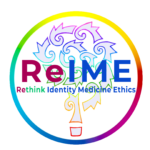
Frequently Asked Questions
Gender dysphoria is a term used to describe a person’s discomfort or distress with the incongruence between their biological sex and their subjective sense of their gender; and is a mental disorder in the DSM-V. Assessment of gender dysphoria is based on a series of questions regarding the person’s treatment, likes and dislikes and level of distress with the gender roles and traits associated with their biological sex.
Gender Non-Conforming is an umbrella term referring to a person’s expression (traits, mannerisms or appearance) or identity different from the gender norms associated with their birth sex. Not all gender non-conforming person’s experience gender dysphoria.
No, biological sex is binary – female and male, each with an exclusive role in the production of one or the other of two types of gametes (large or small) necessary for reproduction. Each sex has a set of secondary sex characteristics with a range of expressions.
Intersex is a general term for Differences in Sexual Development (DSD). DSDs are a variety of in vitro anomalies of the reproductive or sexual anatomy. Some DSDs are not detected at birth, but become apparent at puberty. DSDs are very rare and are sex specific, meaning that they pertain to one sex or the other.
No, a person’s biological sex is innate and immutable. Only the person’s secondary sex characteristics (e.g., hair, voice, fat distribution, jawline, breasts and genitalia) can be altered through hormone treatments and surgeries. And require lifelong maintenance.
A person’s gender identity is part of their subjective self conception and is understood as emergent out of a system of factors including biological, psychological and social factors. It may be stable, fluid or context dependent and play a varied role (weak or strong) in a person’s self conception. There are no objective markers or known determinants as to the cause for an identity that is not congruent with a person’s biological sex or whether it is changeable.
Gender Ideology (sometimes referred to as Transgender Ideology) is a term used to describe an ideology which is a subset of “Queer Theory” with roots in postmodernism which holds that objective reality is a mental construct. Under this ideology. Gender identity is primary and determined by one’s subjective experience, biological sex is a spectrum – “binary sex” is a social construct.
Informed consent is required prior to most medical interventions. In the case of minors, the patient must have capacity and competency to appreciate the harms (potential and likely outcome that may or will result from the intervention) and to fully weight the risks, benefits and alternatives to the treatment. In addition, the patient must be “free” to consent – able to choose the alternative or are they subject to undue influence. The more significant the likely harms the higher the level of ethical scrutiny. And the younger the minor, the more exacting the evaluation of their ability to consent.
The principles of ethical care for gender dysphoria include: (1) respect and support for the individual’s identity and or expression in a neutral non-judgmental clinical environment, (2) consideration of the individual’s psychological, physical and social histories and relationships, (3) age appropriate exploration of depth psychology with respect to identity development and gender expression, (4) exploration of any and all co-morbid mental and/or physical conditions that may contribute to or cause gender dysphoria, (5) age appropriate exploration of identity and/or expression in relationship to sexuality, and (6) information regarding the risks and benefits (both physical and social) of medicalization and the alternatives.